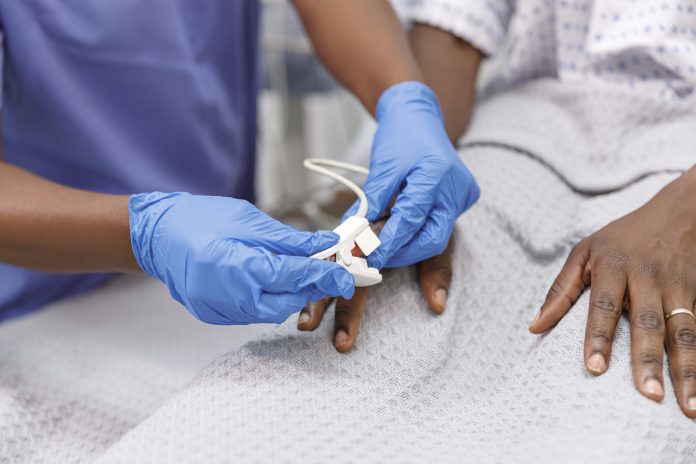
Results from a proof-of-principle study show that smartphone cameras can be used to measure blood oxygen levels in a similar way to a pulse oximeter device and to comparable levels of accuracy.
Led by researchers at the University of California San Diego and the University of Washington, the study included six healthy volunteers who had their blood oxygen tested using smartphone-based monitoring during a trial where different levels of oxygen and nitrogen were given to the participants.
The smartphone method was able to measure down to 70% blood oxygen saturation, which is the lower level recommended by the U.S. Food and Drug Administration for pulse oximeters.
Being able to quickly measure levels of oxygen in the blood is important for monitoring patients with conditions such as asthma or COVID-19. Pulse oximeters measure this in an accurate and non-invasive way, but are not always available at short notice or in non-medical settings.
For this reason, smartphone-based monitoring could be extremely helpful and also allow home monitoring. While this is not the first study to look into this method of measuring blood oxygen, there is a lack of clinical validation data and past studies have not gone below 80% blood-oxygen saturation.
“The camera records how much that blood absorbs the light from the flash in each of the three color channels it measures: red, green and blue,” said lead investigator Edward Wang, an assistant professor at UC San Diego’s Design Lab and the Department of Electrical and Computer Engineering, in a press statement. “Then we can feed those intensity measurements into our deep-learning model.”
In this study, Wang, Jason Hoffman, a University of Washington doctoral student in the Paul G. Allen School of Computer Science & Engineering, and colleagues recruited six volunteers to carry out a proof of principle study to test the accuracy of this method.
The participants were given controlled fractional mixtures of medical grade oxygen-nitrogen to simulate conditions of oxygen from above 93% saturation (resting level) down to 70%. This was carried out in a safe medical setting and followed up by smartphone-based blood oxygen testing. Standard pulse oximeters were also used as a control to compare findings with.
“Other smartphone apps that do this were developed by asking people to hold their breath. But people get very uncomfortable and have to breathe after a minute or so, and that’s before their blood-oxygen levels have gone down far enough to represent the full range of clinically relevant data,” said Hoffman, who is lead author on the paper describing the study published in npj Digital Medicine.
“With our test, we’re able to gather 15 minutes of data from each subject. Our data shows that smartphones could work well right in the critical threshold range.”
With the help of a deep learning model, the smartphone camera method was able to predict low blood oxygen (less than 90% saturation) at a sensitivity of 81% and a specificity of 79%.
The researchers acknowledge their study was small and that more work is needed to refine the method and collect more data from diverse groups of people with different skin types and colors, but say the results are promising.
“It’s so important to do a study like this,” said lead study author Edward Wang, an assistant professor at UC San Diego’s Design Lab and the Department of Electrical and Computer Engineering.
“Traditional medical devices go through rigorous testing. But computer science research is still just starting to dig its teeth into using machine learning for biomedical device development and we’re all still learning. By forcing ourselves to be rigorous, we’re forcing ourselves to learn how to do things right.”













